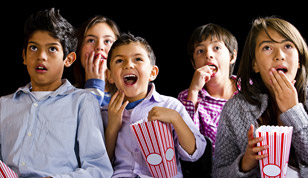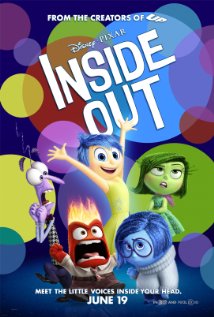Blog Categories
Search Blog
Blog Categories
Reflecting on “Inside Out”
I really liked when Joy and Sadness came home. I thought that Joy was a little cuckoo with Sadness; she wasn’t very happy with Sadness. My favourite characters were Joy and Disgust. And I liked Sadness too. I liked all the characters!
– Movie Review of Pixar’s Inside Out by G.G., age 3.5 years
It seems like everyone has been talking about Disney Pixar’s Inside Out this summer. And for good reason; it is a truly wonderful movie! Not only was it entertaining for all ages, this movie has provided children and their parents with an accessible, imaginative and enlightening framework for how emotions impact our lives. As a psychologist, I think it’s an amazing feat that children and their parents are going to have a much better understanding of such complex constructs as personality, emotion regulation and memory because of this movie. The movie does a remarkable job at illustrating how emotions shape the ways we interact with other people, and the decisions that we make.
What I think it also did well – and what I think was something the writers were very careful to do – was to balance the importance of all emotions. SPOILER ALERT: In Inside Out, the primary conflict is between Joy and Sadness. It seems like Sadness is ruining everything. Joy didn’t want to Riley to be unhappy. What she didn’t realize, was how important it was for Riley to experience all emotions, particularly Sadness. The audience watches as the story unfolds after Sadness causes havoc by accident. What resonated with me, though, was that the story unfolds from Joy trying too hard to keep Sadness in her place.
Joy is not unlike many parents: we strive to make sure our kids are feeling great as much of the time as possible. When we first encounter Riley in the movie, the spotlight is firmly planted on Joy. Similarly, the onus is placed on Joy to save the day. Yet, as we follow the story, we come to understand that emotions don’t have to be an all-or-nothing experience; sometimes different emotions shape the same event or memory. This is an important realization for children, and for parents. As described by Dacher Keltner, PhD., one of the main psychologists who worked on the film, it’s this complexity of emotion that becomes so important as we develop. What the movie makes us realize, is how our happiness and our resolution of big and small problems, can come from the experience of failure, fear, embarrassment, frustration, disappointment and loss.
The essential need to experience both positive and negative emotions by children reminded me of a 2011 article in the Atlantic magazine, which talked about the possible repercussions of parents working too hard to keep their children happy, because of their own fears about their child experiencing anxiety, discomfort and disappointment. It was a fascinating read, and it highlighted an increasing body of literature that supports the importance of “psychological immunity” and a “growth mindset”. Children should not be protected altogether from negative feelings, because they need to know how to cope with them when they encounter them later on. Moreover, how a child learns to make sense of their mistakes and failures, plays in a role in their motivation, their drive and their resiliency.
For even the youngest moviegoers, Inside Out has shone a light into what goes on inside their own minds. It’s provided a dynamic group of characters, which rely on each other to keep things running smoothly. For somewhat older moviegoers, it provides us with an opportunity to recognize how our emotions bring out other likeminded emotions in others. Like Joy, our mission to make everything right may backfire. The story emphasizes the need to experience the “good stuff” and the “bad stuff”, not to avoid it or fix it so much that our children can’t name it or feel it or cope with it.
“But happiness in a meaningful life is really about the full array of emotions, and finding them in the right place.”
– Dacher Keltner, Ph.D.
For more information about the making of Inside Out, please check out the following resources:
- http://www.psmag.com/books-and-culture/a-conversation-with-psychologist-behind-inside-out
- http://www.npr.org/sections/health-shots/2015/06/13/413980258/science-of-sadness-and-joy-inside-out-gets-childhood-emotions-right
- http://www.nytimes.com/2015/07/05/opinion/sunday/the-science-of-inside-out.html?_r=1







